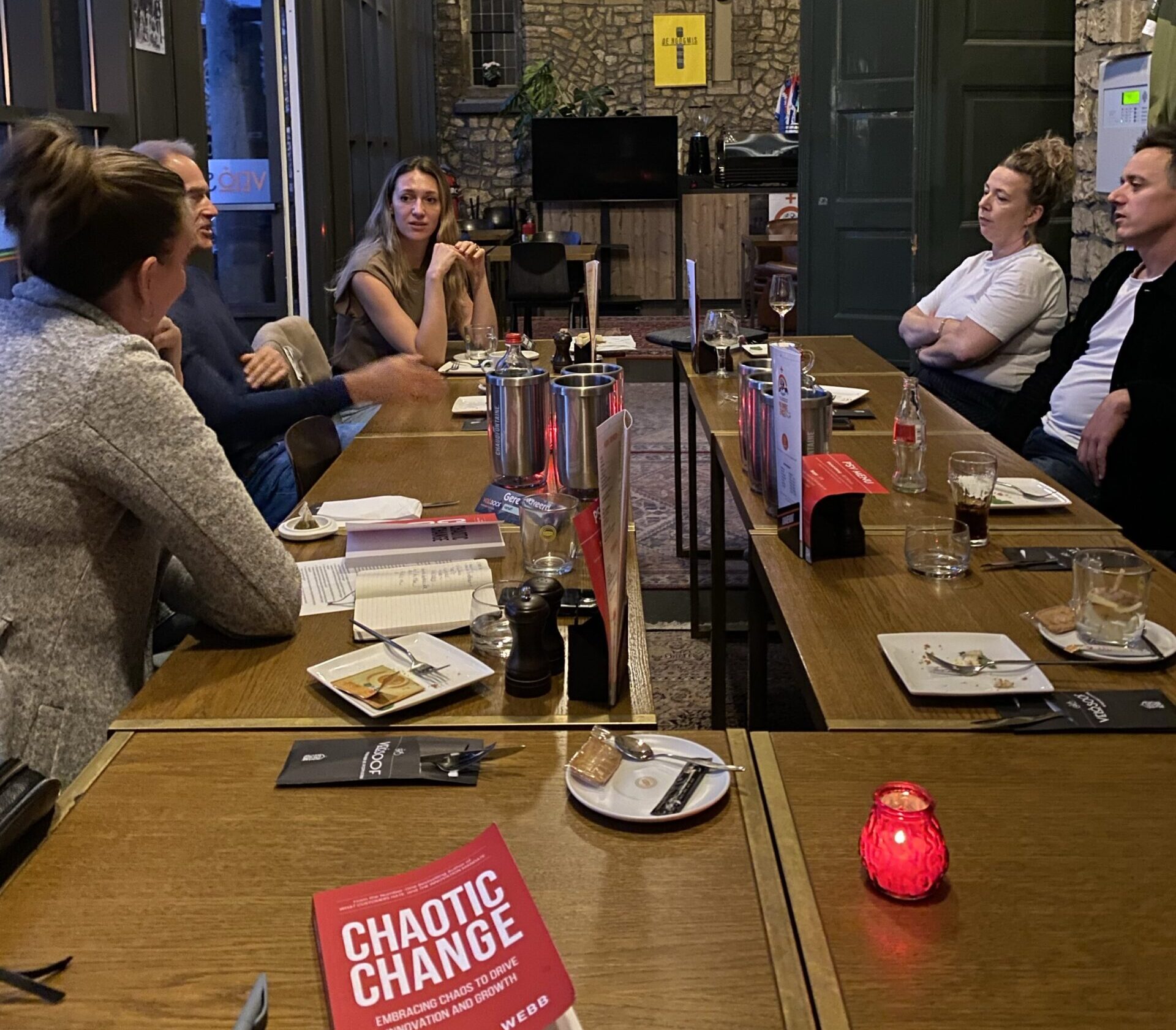Contact us
Tech to Market
Essenstraat 1
5616 LG Eindhoven
The Netherlands
Embracing chaos in a changing world
Embracing chaos in a changing world: Insights from our book club
At our most recent Tech to Market book club, we discussed Nicholas J. Webb’s Chaotic Change: Embracing Chaos to Drive Innovation and Growth. What began as a book discussion quickly turned into a broader conversation about how we deal with real-life change. The ideas that came up at Velosoof Wielercafé in Eindhoven soon took on a life of their own.
Growing through discomfort
One concept that stayed with us was the link between discomfort and growth. Change is rarely easy, and companies often hit a wall when things get tough. Some fail, such as Nokia, while others adapt and grow. Sharing stories from our experiences, we talked about how pushing through difficult times may lead to incredible achievements.
Do we lead or follow change?
Our discussion then turned to the customer’s role in these chaotic changes. Is it always motivated by their demands, or do companies sometimes create these needs themselves? This sparked a lively debate about the complexities of changing consumer behaviour, especially regarding sustainability. We noted that often, people need to feel discomfort—much like during the pandemic—before they’re willing to embrace new ideas.
We’ve moved from an era of incremental innovation, through disruptive innovation, to our current state of chaotic innovation.
Top Futurist
The strength of ecosystems and agility
Collaboration was a key theme during this evening. We all agreed that nobody can face change alone. In areas such as Brainport Eindhoven, keeping ahead requires collaboration and adaptability. Embracing chaos in an agile way—drawing on principles from the agile methodology—helps us respond smartly to new challenges, iterating and adjusting as needed.
Innovation isn’t just about technology
Sure, technology such as AI is critical, but it is also more than that. Innovation involves our mindset and approach to overcoming obstacles. It’s about being open to new ideas and eager to attempt something unusual. We shared examples of how companies are learning to innovate not only via AI but also through creativity and new thinking. Innovation involves challenging limits and exploring unconventional ideas. It involves being ready to take chances and view failures as valuable lessons. Encouraging an innovative culture allows companies to lead the way and make significant impacts in their fields.
Seeing chaos as opportunity
As we wrapped up, one thing became clear: chaos isn’t as bad as it seems. It might be the spark that opens up fresh possibilities. The challenge is to embrace the chaos and make it into something positive. For us marketers, this means remaining open, collaborating, and finding ways to transform obstacles into opportunities.

Nicholas adds ‘Over the next five years, three major trends will shape the future of every organization. First, the demand for delivering far greater experiential value to customers. Second, the rapid adoption of emerging technologies, including connection architecture, artificial intelligence, and robotic process automation. And lastly, the evolution of the workforce, requiring us to build cultures centered on employee happiness through human experience innovation. The best organizations will thrive by mastering one core competency: leaning into the blur of chaotic change.‘
What’s up next?
Up next, our December book club will explore new ideas on Buyer Personas (full details here). We’d love for you to join the conversation. Register now and continue exploring new perspectives with us.
This was our third book club gathering, following discussions on Content Marketing Strategies by Robert Rose and Return on Learning by Rob Adams.